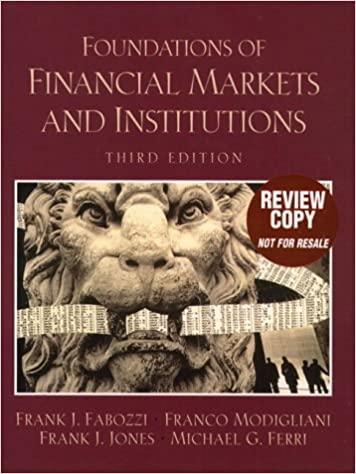Question
2. (1 point) Suppose that on October 1, a UK rm agreed to buy one Boeing 777 from Boeing on December 1 at a price
2. (1 point) Suppose that on October 1, a UK rm agreed to buy one Boeing 777 from Boeing on December 1 at a price of $ 250 million. The October 1 spot exchange rate was $1.3291/. The forward rate for December 1 was quoted at $1.3320/. ( is the symbol for British pound). The UK firm entered a forward contract to hedge the positions. (a) What was the exchange rate risk that this UK rm faced? (b) Should it buy (long) or sell (short) British pound in the forward contract to hedge this risk? Explain why this position serves as a hedge. (c) Compute the total costs to the rm when the Dec. 1 spot exchange rate is $1.3011/ and when the Dec. 1 spot exchange rate is $1.3567/. In which case, the total costs are lower without hedging? (d) What is the main difference between forward and futures contract? In this question, since the futures contract will expire on the third Wednesday of December, which is after the transaction date. There is a mismatch between the dates. Will the forward contract be better? (e). If the UK firm decides to use currency option to hedge the risk, should it buy call or put option on British pound? (f) If the UK firm decides to fix the exchange rate at $1.33 / with option, it will spend 2,630,532.39 to purchase the option. Compute the total costs to the rm when the Dec. 1 spot exchange rate is $1.3011/ and when the Dec. 1 spot exchange rate is $1.3567/. In which case will the firm exercise the option? Compared with the hedging strategy with forward contract in (c), in which case does the option hedging strategy perform better?
Step by Step Solution
There are 3 Steps involved in it
Step: 1

Get Instant Access to Expert-Tailored Solutions
See step-by-step solutions with expert insights and AI powered tools for academic success
Step: 2

Step: 3

Ace Your Homework with AI
Get the answers you need in no time with our AI-driven, step-by-step assistance
Get Started


